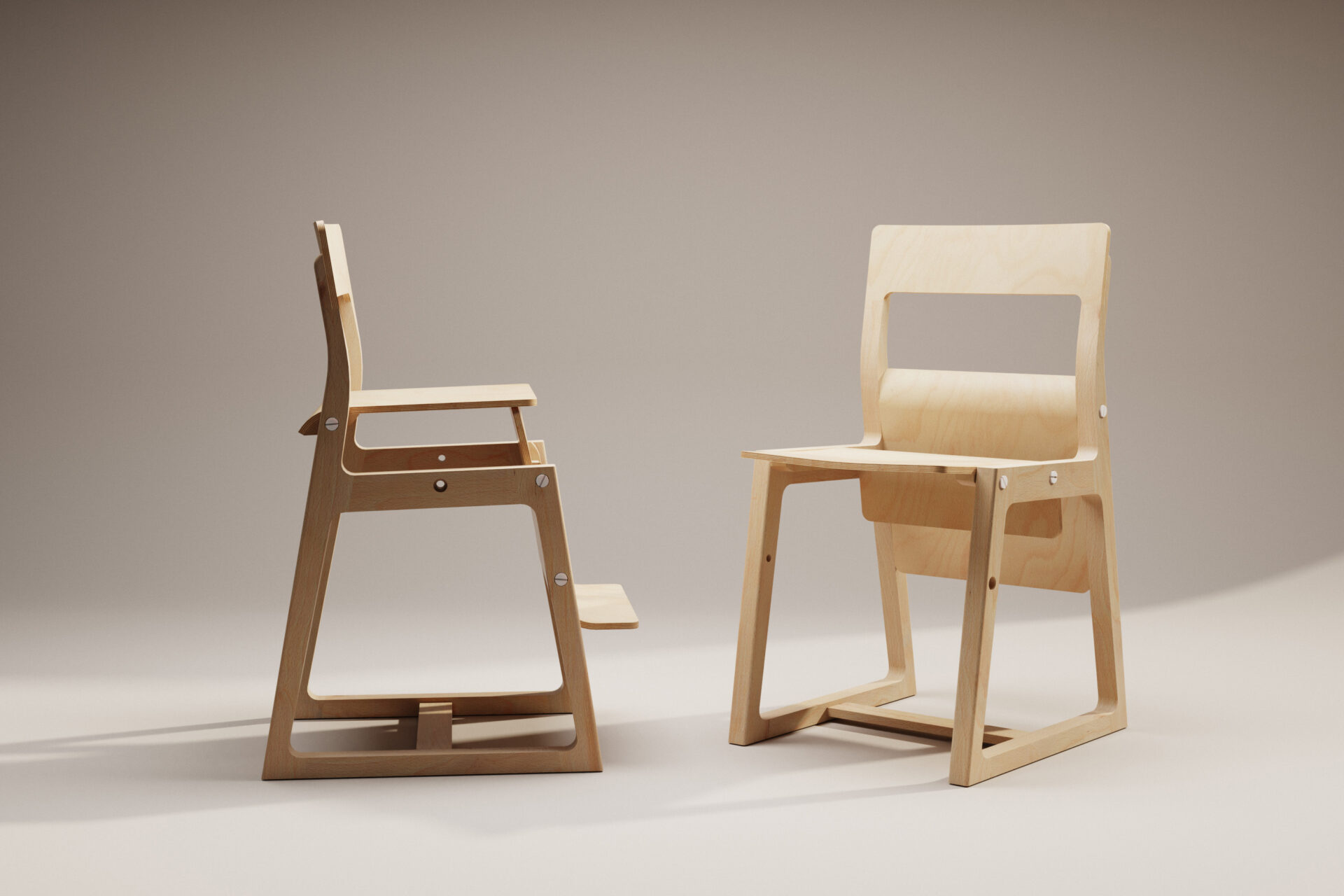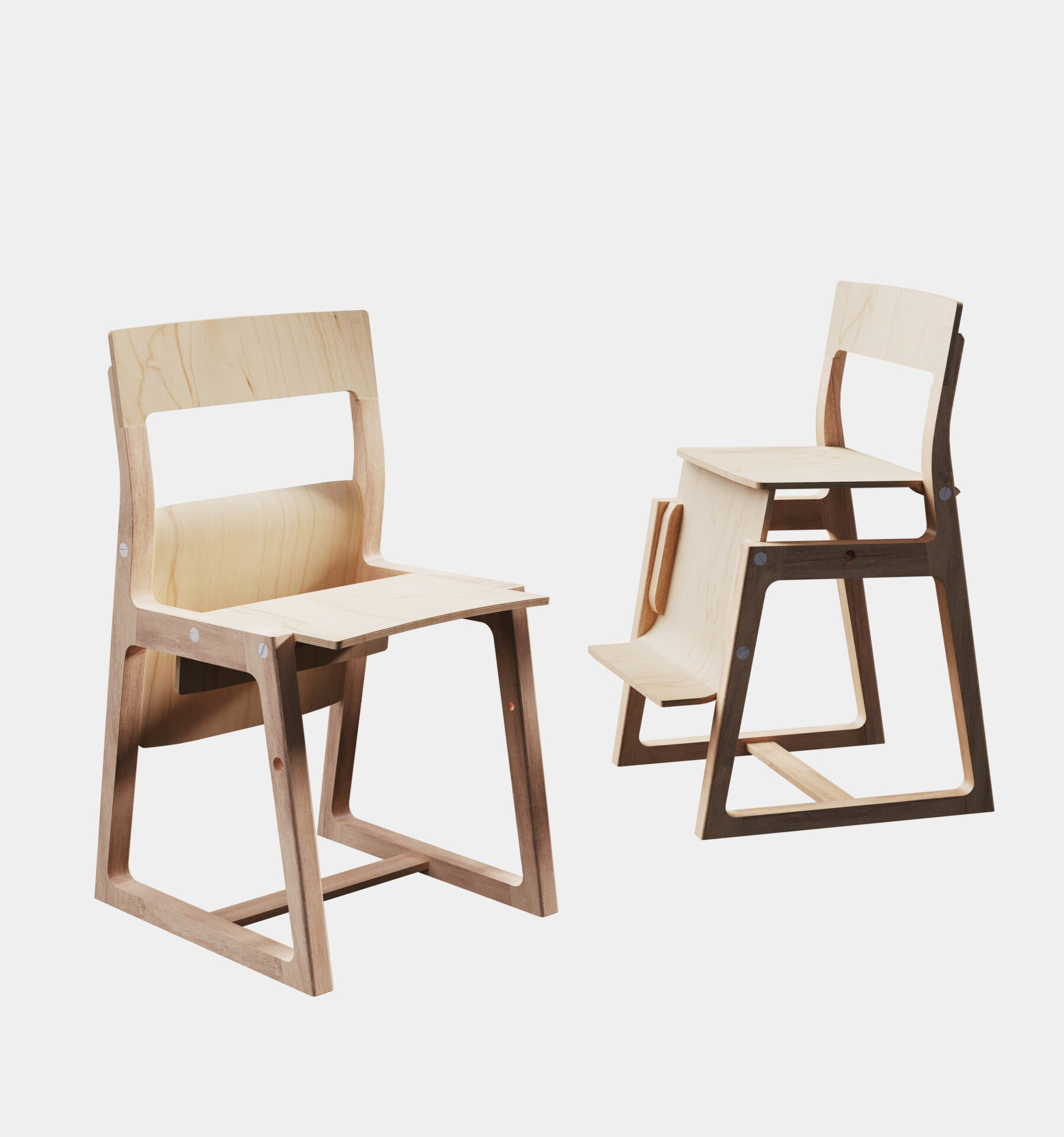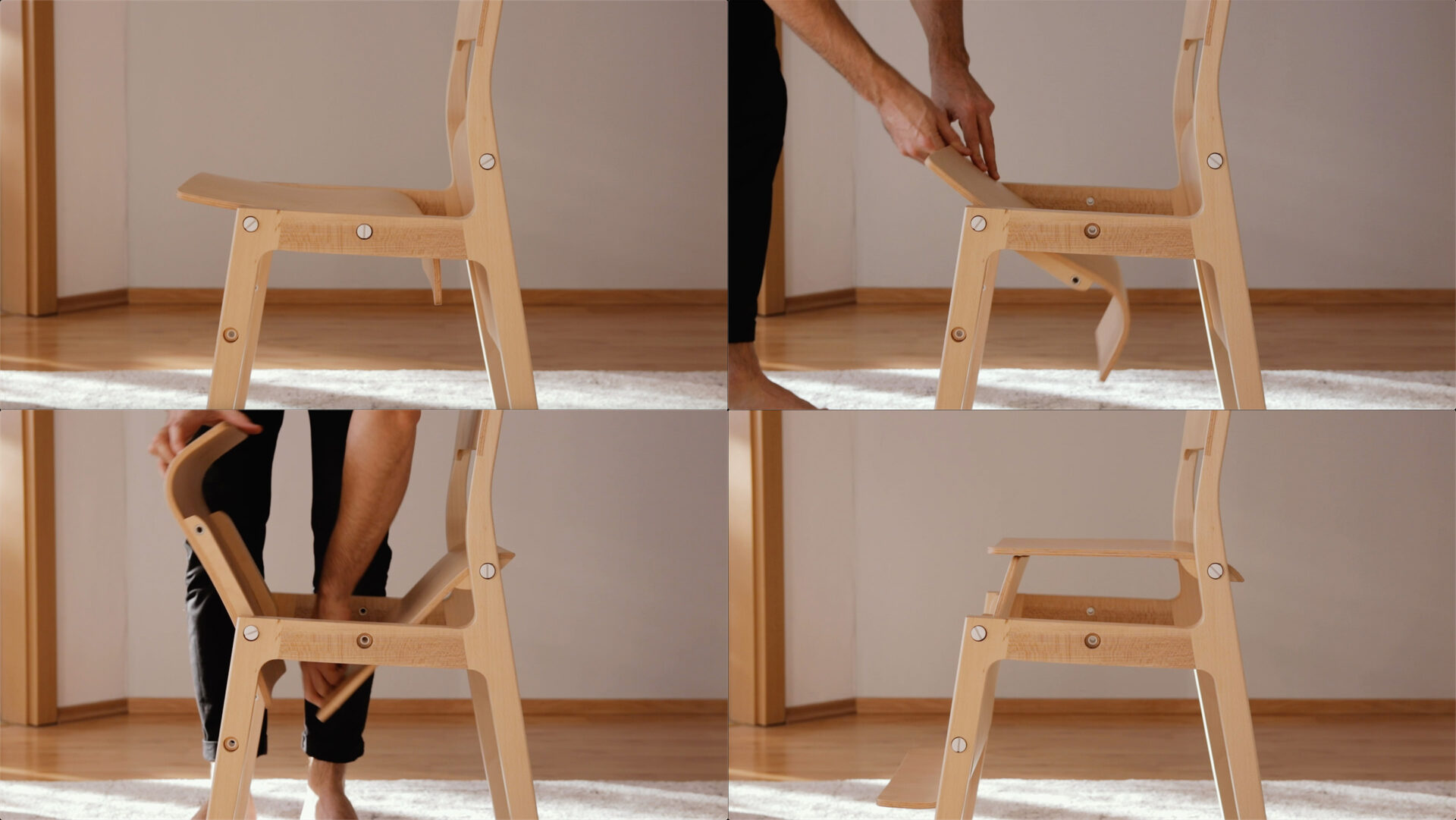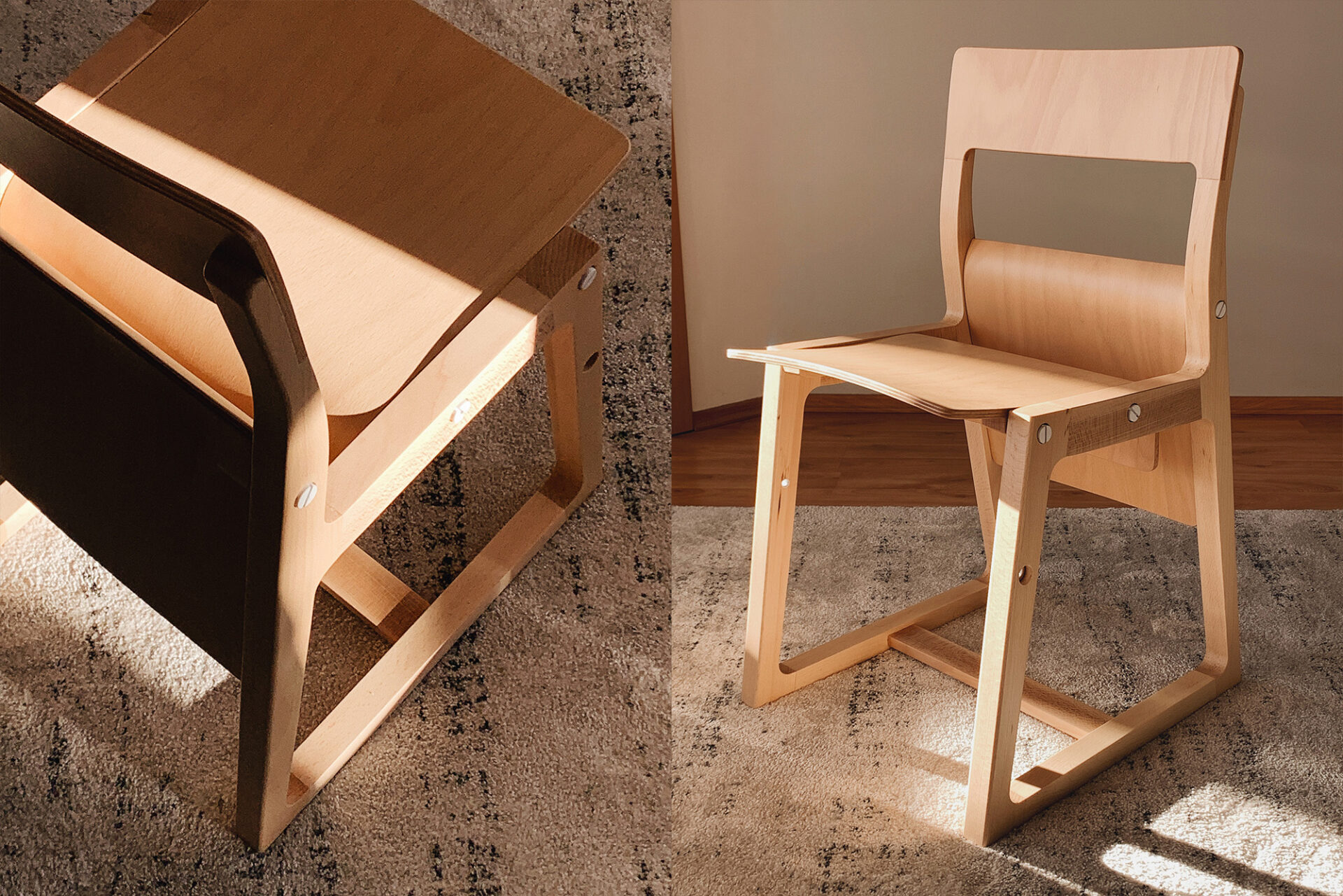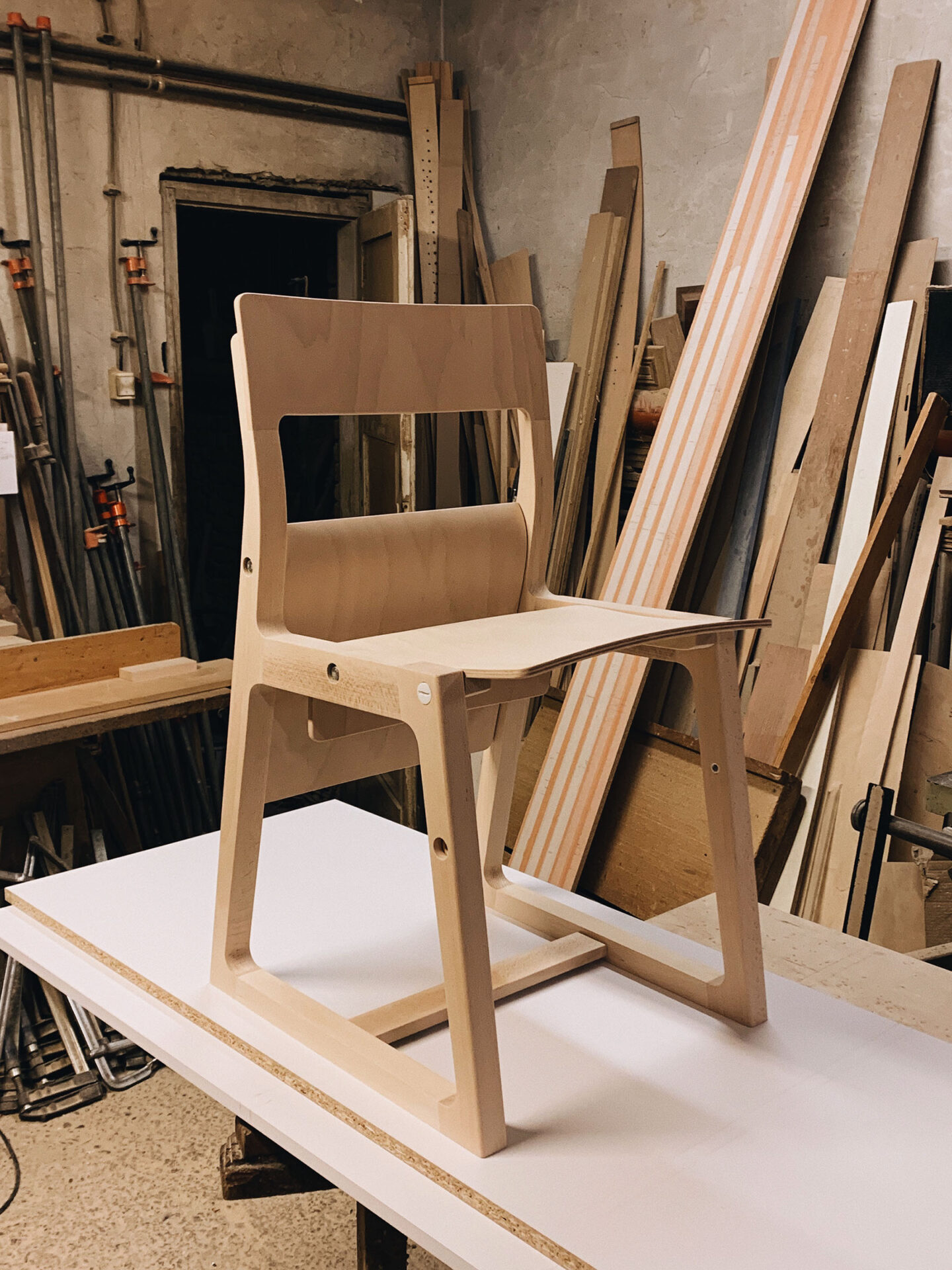(c)heir
Company Name:
Nagy Tamas Mate
Category:
product design
Project description:
A piece of adaptable dining furniture making the seat height apt for children and adults as well, lengthening the lifetime of the traditional high chair.
Children and adults require different ergonomics when it comes to seating. For the child after the age of about 4, the previously much needed security of a traditional high chair starts to become a burden, hence other, less restricting high chairs or boosters are used. These can become obsolete once children have outgrown them, taking up unnecessary space in the home.
The height of the chair can be transformed by turning the seats over, making the seating height and depth better suited for children. A footrest also helps little ones in getting up and down from the chair on their own.
When children grow up, the furniture can be converted back to the adult size position. The alteration can even be done with a coin, not needing the use of specialized tools.
The chair is made of beech, an accessible and widely used material for its structural properties and durability. The longevity of the product and the underlying idea also makes the concept emotionally durable.
What makes it smart / innovative?:
Children learn by imitation and are more inclined to behave better around the table if they too can sit in the adults’ chairs and their tools resemble those of adults.
The added value of the product is the two functions; a high chair and an adult chair within one piece of furniture. In addition, traditional high chairs go out of use for a significant period of time after children grow up, but in this way, with an easy alteration the chair can be used for longer.
Why is it relevant for the final user?:
Having children is a significant part of one’s life and can bring tremendous joy, sometimes difficult, however very much needed challenges and unsurprisingly a lot of clutter. High chairs made for children already exist on the market, but they usually differ from the character of other chairs placed in the dining room. This concept is an attempt at decluttering.
When buying children’s furniture, people usually don’t think long term, but it doesn’t have to be that way. Further relevance lies in the lengthening of the lifetime of the product. The name (c)heir also represents this emotional durability, with the amalgamation of the “chair” and “heir” nouns.
Link to the project:
https://www.behance.net/gallery/145491377/cheir-20-Redesign
Pdf presentation:

